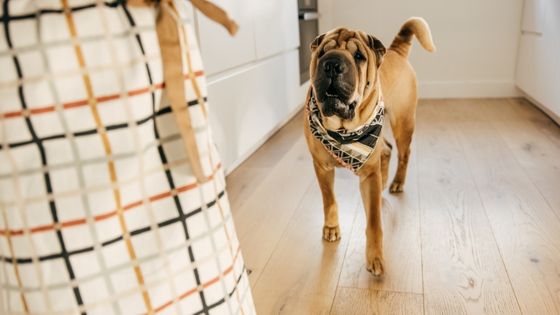Separation anxiety in dogs can be a difficult behavior issue to deal with since dogs who experience separation anxiety become incredibly anxious and stressed when their owners leave them alone. New lab puppies often suffer from separation anxiety. They may bark, whine, howl, chew, and scratch in an attempt to escape or find their owner. The good news is that there are steps you can take to help your dog feel more comfortable when left alone. Follow these tips on how to treat separation anxiety in dogs.

Gradual departures and short absences
One of the best ways to treat separation anxiety in dogs is by gradually getting them used to your departures and short absences. As Sally Said So you must start by gradually increasing the time you spend away from your dog. Leave for just a minute or two and then return, gradually increasing the time you are away.
Ensure you come and go without making a big deal about it. Being relaxed about coming and going can help your dog understand that your departures and reunions are a normal part of daily life and not something to become anxious about.
Create a comfortable environment
Creating a safe space for your dog can help them feel more secure when you’re not around. Their comfortable space can be a crate, a designated room, or an area of your home that your dog is comfortable in. Make sure the space is comfortable and free from any potential hazards. You can also leave your dog with some comforting items, such as a favorite toy, blanket, or piece of clothing with your scent.
Train your dog
Training is another critical step in treating separation anxiety in dogs. Positive reinforcement training can be beneficial in reducing separation anxiety. Encourage good behavior and reward your dog when they are relaxed in your absence.
You can also counter-condition your dog to your departures by creating positive associations with your leaving cues. For example, you may give your dog a special treat or toy whenever you leave the house. This positive conditioning will help your dog associate your leaving with good things rather than anxiety.
Avoid punishing your dog
Punishing your dog for their behavior when you’re not around will not solve the problem and can worsen it. Instead, focus on positive reinforcement training when you are with your dog. Positive reinforcement can help build their confidence and make them feel more comfortable when left alone.
Gradually extend the periods you’re away
After establishing a routine of short absences, gradually increase the time you spend away from your dog until they can stay alone for several hours without becoming anxious.
Remember to stay relaxed when you return home for the first few minutes to help them understand that departures and arrivals are normal and nothing to be anxious about.
Keep your dog busy
Dogs with separation anxiety often become bored and restless when left alone. Providing them with interactive toys or puzzles can help keep them busy and distracted. You can also leave them with a treat-stuffed toy, such as a Kong, to keep them occupied.
Wrap up
In conclusion, separation anxiety in dogs can be challenging and distressing for both dogs and their owners. Treating separation anxiety in dogs takes patience, consistency, and persistence. Remember to be patient and understanding regarding your dog’s anxiety. You and your dog can manage it effectively with the proper care and attention.
